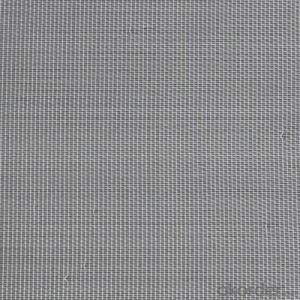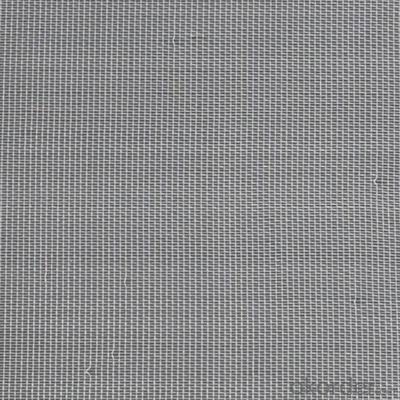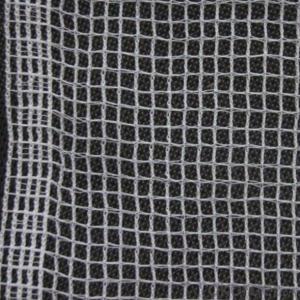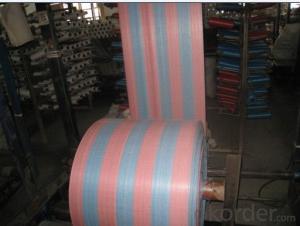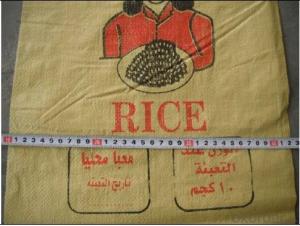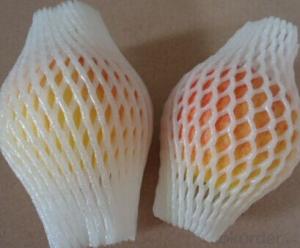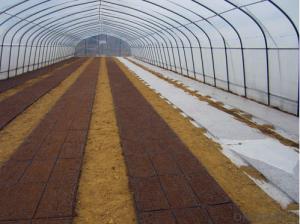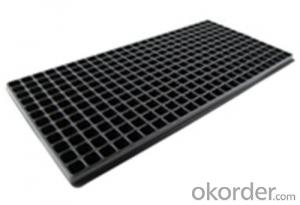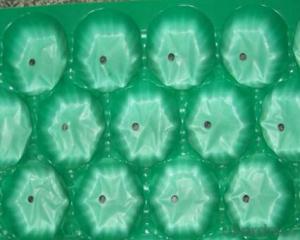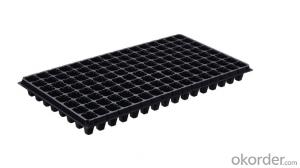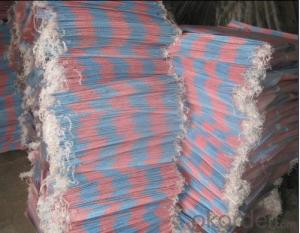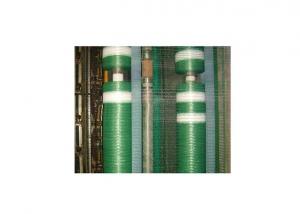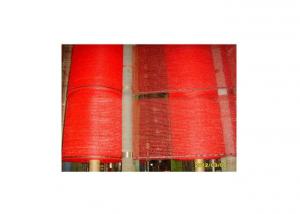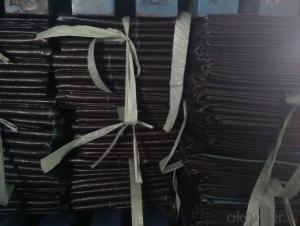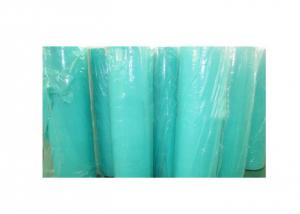White Color Quality Anti-Insect Products
- Loading Port:
- China Main Port
- Payment Terms:
- TT OR LC
- Min Order Qty:
- -
- Supply Capability:
- -
OKorder Service Pledge
OKorder Financial Service
You Might Also Like
Quick Details
Type: | Shade Sails & Enclosure Nets | Place of Origin: | Shandong China (Mainland) | | |
Shade rate: | 30%-95% | | | | |
Packaging & Delivery
Packaging Detail: | 1.one roll packed with one strong PP bag with one color label 2.one piece packed with one strong PP bag with one color label;several pieces put in a carton |
Delivery Detail: | 15days after the order |
Specifications
Material:HDPE+UV
Color :Black,Green,Red,Yellow,Blue,etc
Length: As your request
Width: 2~6m
Shade rate: 30%~95%,
Specifications : |
|
Description | 100% HDPE Green Sunshade net |
Material | HDPE(High-density polyethylene) |
Net weight | 50-350gsm (as your request) |
Net width | 6'x20'(1.83mx6.1m),Or other size is available (6meters Max.) |
Rolls Lengths | On request(10m,50m,100m,200m etc.) |
Shade rate | 30%-95% |
Colours | Green,Black ,Yellow,gray...... ( as your request) |
Type | Warp knitted |
U.V. | CIBA( 1-5 year) |
Supply capacity | 5tons per month |
Packing | 1.one roll packed with one strong PP bag. 2.one piece packed with one strong PP bag and several pieces put in a carton. 3.one roll packed with one strong PP bag and several one put in a woven bag. |
Terms of Payment | 1.30% T/T in advance,70%T/T after copy B/L. 2.L/C at sight;L/C 30days;L/C 45days. 3.Western union. |
Deliver time | 30-45 days after the order confirmed or the deposit released |
Function of shading net:
Shade net will Blocks sun &heat, Provides 75% More Shades, Lower temperature, Protect against harmful ultraviolet Rays
Used to provide shade against sunlight and control temperature
Shade net-can also be used-for-greenhouses to protect flowers, trees against frost ,and hail damage It can also used for playhouse ,temporary fencing,
shade fabrics give uniform shading and allow crops to retain more moisture. Our shades can help reduce temperature extremes on plants and slow heat loss at night.
Easy to install with optional accessories if necessary.
- Q: Are there any health risks associated with agricultural plastic products?
- Yes, there are potential health risks associated with agricultural plastic products. Some of these risks include the release of harmful chemicals from the plastic into the environment, contamination of soil and water sources, and potential ingestion of plastic particles by animals and humans. Additionally, improper disposal of agricultural plastics can contribute to pollution and harm ecosystems. It is important to handle and dispose of these products properly to minimize the health risks.
- Q: What are the environmental regulations concerning the use of single-use agricultural plastic products?
- <p>Yes, there are environmental regulations on the use of single-use agricultural plastic products. These regulations vary by country and region but generally aim to reduce pollution and promote sustainability. For instance, the European Union has implemented regulations like the Single-Use Plastics Directive, which targets a reduction in single-use plastics, including those used in agriculture. In the United States, the Environmental Protection Agency (EPA) encourages the reduction of plastic waste, and some states have specific regulations. Other countries may have bans or taxes on certain single-use plastics, or they may require producers to take responsibility for the waste their products generate. Compliance with these regulations is crucial for agricultural businesses to avoid penalties and to contribute to environmental conservation.</p>
- Q: What are the best ground cover plants for shady areas under trees?
- Some of the best ground cover plants for shady areas under trees include hostas, ferns, vinca minor, ajuga, lamium, and sweet woodruff. These plants are known for their ability to thrive in low light conditions and provide an attractive, dense ground cover. They also help suppress weeds and retain moisture in the soil.
- Q: How does agricultural plastic affect crop quality grading?
- Agricultural plastic can have both positive and negative effects on crop quality grading. On one hand, plastic mulch can enhance crop productivity and quality by controlling weed growth, conserving moisture, and preventing soil erosion. This can result in higher crop yields and improved grading scores. On the other hand, if plastic waste is not properly managed and disposed of, it can contaminate the field and affect crop quality. Plastic fragments or residues left behind can lead to lower grading scores, especially if they are visually detectable or affect the taste or texture of the crop. Therefore, it is crucial to use and dispose of agricultural plastic responsibly to minimize its negative impact on crop quality grading.
- Q: How do you prevent ground cover plants from spreading into play areas?
- One effective way to prevent ground cover plants from spreading into play areas is by installing a physical barrier, such as edging or landscape fabric, around the play area. This barrier can be buried partially underground to prevent the plants' roots from creeping into the play area. Additionally, regular maintenance and monitoring of the ground cover plants can help to promptly remove any new growth or runners that may emerge near the play area, ensuring their containment.
- Q: This question asks about the methods farmers use to manage their land in order to reduce the excessive use of agricultural plastic.
- <p>Farmers employ various strategies to manage their land and minimize the use of agricultural plastic. They often opt for biodegradable plastics that decompose naturally, reducing environmental impact. Some farmers use plastic mulches that can be reused multiple times, extending their lifespan and reducing waste. Integrated Pest Management (IPM) practices are also adopted to reduce the need for plastic-based pest control methods. Additionally, precision agriculture technologies help in applying fertilizers and pesticides more accurately, thus cutting down on plastic packaging waste. Farmers also participate in recycling programs for agricultural plastics, ensuring that used materials are properly disposed of or repurposed. These practices help in sustainable land management and reduce dependency on agricultural plastics.</p>
- Q: What are some ground cover options for full sun areas with poor soil?
- Some ground cover options for full sun areas with poor soil include creeping thyme, creeping phlox, sedum, ice plant, and vinca minor.
- Q: Are nursery trays suitable for starting succulent cuttings?
- Yes, nursery trays can be suitable for starting succulent cuttings. These trays provide a controlled environment for rooting the cuttings and allow for easy monitoring of moisture levels. However, it is important to ensure proper drainage and use a well-draining soil mix to prevent overwatering and root rot. Additionally, providing adequate light and avoiding direct sunlight can help promote healthy growth in succulent cuttings.
- Q: Are nursery trays biodegradable?
- Yes, most nursery trays are biodegradable. They are typically made from materials such as bioplastics, peat, or coconut coir, which break down naturally over time. This makes them environmentally friendly and suitable for composting or recycling. However, it is important to check the specific tray's packaging or label to ensure its biodegradability.
- Q: i started recycling and I noticed that there is A LOT of plastic. So can I only recycle things with the symbol on it or can i recycle all plastic...like the plastic inside a cereal box. that doesnt have a symbol but its plastic. that is just one example.thanks
- problematic problem. research over google. that will may help!
Send your message to us
White Color Quality Anti-Insect Products
- Loading Port:
- China Main Port
- Payment Terms:
- TT OR LC
- Min Order Qty:
- -
- Supply Capability:
- -
OKorder Service Pledge
OKorder Financial Service
Similar products
Hot products
Hot Searches
Related keywords
